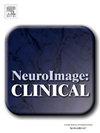儿童信息处理速度的基础网络连接:小儿脑肿瘤幸存者损伤模型的应用。
IF 3.4
2区 医学
Q2 NEUROIMAGING
引用次数: 0
摘要
阐明大脑网络结构连通性的适应性和不适应性变化如何影响神经同步,以及这种结构-功能耦合如何影响认知,是人类神经科学的一个重要问题。本研究评估了默认模式和执行控制网络在静息状态、视觉运动任务中的这些联系,并通过计算模型评估了发育中大脑和后天性脑损伤中的这些联系。小儿脑肿瘤幸存者被用作损伤模型,因为众所周知他们会表现出认知障碍、结构连接受损和神经通信紊乱。我们以信息处理速度为重点来评估认知能力,结果表明,在有和没有特定任务要求的情况下,这些关键脑网络的结构连通性会直接影响神经交流和信息处理速度,而白质受损则会通过扰乱的神经同步性对反应时间产生间接的不利影响。此外,当我们通过实验获得的结构连接组模拟神经活动时,所产生的功能模拟结果与我们的经验结果一致,并准确预测了认知群体差异。总之,我们的协同研究结果进一步加深了我们对认知神经基础以及认知何时受到干扰的理解。进一步将结构-功能耦合的改变确立为认知障碍的生物标志物,有助于对这些缺陷进行早期干预和监测。本文章由计算机程序翻译,如有差异,请以英文原文为准。
Network connectivity underlying information processing speed in children: Application of a pediatric brain tumor survivor injury model
Elucidating how adaptive and maladaptive changes to the structural connectivity of brain networks influences neural synchrony, and how this structure–function coupling impacts cognition is an important question in human neuroscience. This study assesses these links in the default mode and executive control networks during resting state, a visual-motor task, and through computational modeling in the developing brain and in acquired brain injuries. Pediatric brain tumor survivors were used as an injury model as they are known to exhibit cognitive deficits, structural connectivity compromise, and perturbations in neural communication. Focusing on information processing speed to assess cognitive performance, we demonstrate that during the presence and absence of specific task demands, structural connectivity of these critical brain networks directly influences neural communication and information processing speed, and white matter compromise has an indirect adverse impact on reaction time via perturbed neural synchrony. Further, when our experimentally acquired structural connectomes simulated neural activity, the resulting functional simulations aligned with our empirical results and accurately predicted cognitive group differences. Overall, our synergistic findings further our understanding of the neural underpinnings of cognition and when it is perturbed. Further establishing alterations in structural–functional coupling as biomarkers of cognitive impairments could facilitate early intervention and monitoring of these deficits.
求助全文
通过发布文献求助,成功后即可免费获取论文全文。
去求助
来源期刊

Neuroimage-Clinical
NEUROIMAGING-
CiteScore
7.50
自引率
4.80%
发文量
368
审稿时长
52 days
期刊介绍:
NeuroImage: Clinical, a journal of diseases, disorders and syndromes involving the Nervous System, provides a vehicle for communicating important advances in the study of abnormal structure-function relationships of the human nervous system based on imaging.
The focus of NeuroImage: Clinical is on defining changes to the brain associated with primary neurologic and psychiatric diseases and disorders of the nervous system as well as behavioral syndromes and developmental conditions. The main criterion for judging papers is the extent of scientific advancement in the understanding of the pathophysiologic mechanisms of diseases and disorders, in identification of functional models that link clinical signs and symptoms with brain function and in the creation of image based tools applicable to a broad range of clinical needs including diagnosis, monitoring and tracking of illness, predicting therapeutic response and development of new treatments. Papers dealing with structure and function in animal models will also be considered if they reveal mechanisms that can be readily translated to human conditions.
 求助内容:
求助内容: 应助结果提醒方式:
应助结果提醒方式:


